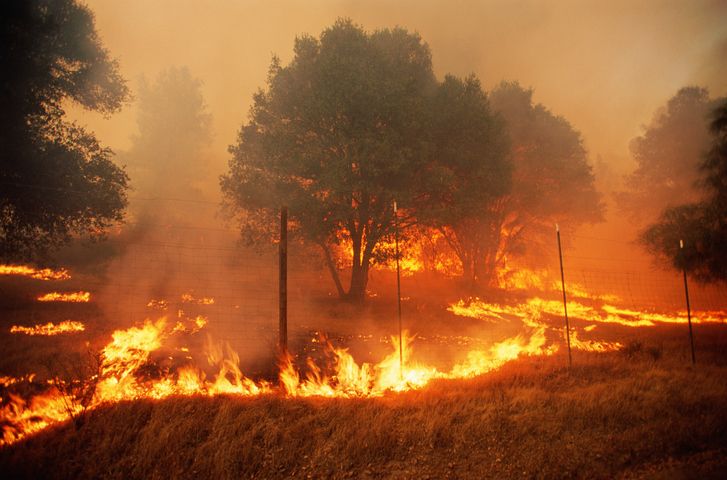
XPRIZE announced teams advancing in its $11 million global competition to develop breakthrough wildfire detection and suppression technologies, as destructive wildfires intensify globally and prompt urgent action from world leaders.
The four-year competition has selected 11 finalists for space-based wildfire detection and 15 semifinalists for autonomous wildfire response from teams across multiple countries, according to the organization.
Growing Wildfire Threat Demands Innovation
The escalating global wildfire crisis has reached a tipping point that traditional response methods cannot adequately address, according to XPRIZE. Recent commitments from the G7 nations and other international bodies have recognized wildfire as a growing threat, while a new U.S. Executive Order calls for a sweeping overhaul of federal wildfire governance. As policymakers work to redefine wildfire response frameworks, the need for transformative technology solutions has become increasingly urgent, XPRIZE said.
“Wildfires are growing more frequent, more destructive, and more costly, and the status quo is no longer sustainable in a changing climate,” said Andrea Santy, XPRIZE Wildfire Program Director.
The timing of the competition reflects broader recognition that current wildfire management approaches are insufficient for the scale and intensity of modern fire seasons. Traditional detection methods often fail to identify fires quickly enough to prevent catastrophic spread, while suppression efforts frequently arrive too late to contain rapidly moving blazes across vast landscapes, according to XPRIZE.
Technical Challenges Push Innovation Boundaries
The competition’s two complementary tracks present formidable technical challenges that require breakthrough innovations in detection speed, accuracy, and autonomous response capabilities. Teams in the Space-Based Wildfire Detection & Intelligence track must accomplish what seems nearly impossible: accurately detect all fires across landscapes larger than entire states or countries within one minute, then precisely characterize and report data with minimal false positives to ground-based decision-makers within 10 minutes.
The complexity extends beyond mere detection, according to XPRIZE. Teams must demonstrate sophisticated analytical capabilities using historical Earth observation data, showcasing their ability to quickly, accurately, and precisely report insights on predetermined wildfire targets while filtering out false positives that could trigger unnecessary emergency responses.
The Autonomous Wildfire Response track presents equally demanding requirements. Teams have just 10 minutes to autonomously detect and suppress high-risk fires across 1,000-square-kilometer areas in environmentally challenging conditions, while leaving decoy fires untouched. This requires fully autonomous systems capable of detection, navigation, safety protocols, and informed suppression decisions without human intervention.
The competition’s rigorous technical verification process has already proven challenging. Teams must submit written and video demonstrations as evidence their technologies can handle the full autonomous wildfire response pipeline, from initial detection through successful suppression.
Breakthrough Solutions Taking Shape
The advancing teams are developing technologies that could fundamentally transform wildfire management, according to XPRIZE. The judging panel, composed of wildland firefighting experts, technical specialists, and wildfire researchers, awarded $300,000 between six advancing teams in the space-based track, recognizing their distinct data analytic capabilities during semifinals testing.
Over the coming months, the XPRIZE Wildfire operations team will conduct in-field testing at each Autonomous Semifinalist team location, where teams will physically demonstrate their end-to-end wildfire response systems. These live trials, captured by the Alaska Center for Unmanned Aircraft Systems Integration, will provide unprecedented behind-the-scenes looks at wildfire technology in action.
In August 2025, Space-Based Finalist teams will have the option to participate in a live-fire exercise conducted with the New South Wales Rural Fire Service in Australia, preparing for finals testing in early 2026. This real-world testing environment will provide crucial validation of technologies under actual fire conditions.
“Technology at its best is a force multiplier for good, and wildfire is exactly the kind of global challenge that demands bold, collaborative technological innovation,” said Dr. Catherine Ball, XPRIZE Wildfire Advisory Board Member. “This is what 21st-century climate resilience looks like: bold ideas, tested rigorously, and deployed at a planetary scale.”
The competition concludes in 2026, with winning teams in each track receiving $3.5 million, plus a $1 million bonus prize from Lockheed Martin for exceptional performance in accurate wildfire detection.
View the XPRIZE finalists and semi-finalists here.
